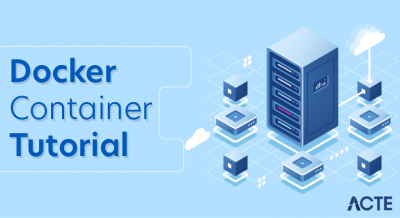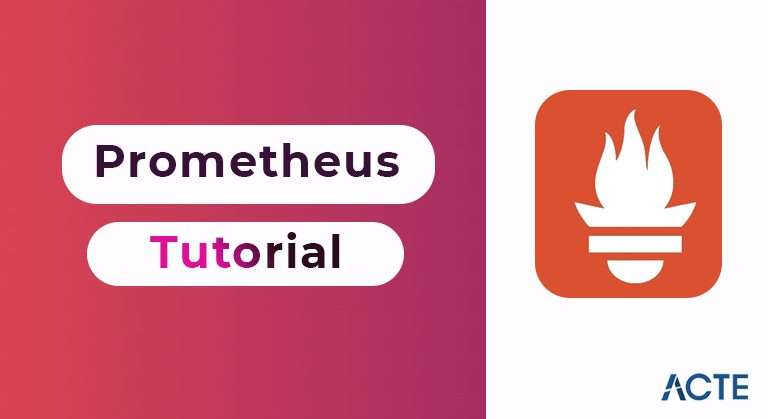
- Introduction to Prometheus
- About Prometheus
- Features of
- Prometheus Types
- History
- Engineering
- Information stockpiling design
- Information assortment
- PromQL
- Scope of Prometheus
- Applications of Prometheus
- What is Prometheus – Use cases
- What is Hosted Prometheus by MetricFire ?
- Elements of Prometheus
- Prometheus Client libraries
- Conclusion
Introduction to Prometheus:-
Prometheus is a n open-source frameworks observing and cautioning tool stash initially worked at SoundCloud. Since its beginning in 2012, many organizations and associations have embraced Prometheus, and the task has an exceptionally dynamic engineer and client local area. It is currently an independent open source project and kept up with freely of any organization. To underline this, and to explain the venture’s administration structure, Prometheus joined the Cloud Native Computing Foundation in 2016 as the second facilitated project, after Kubernetes.
About Prometheus:-
Prometheus gathers and stores its measurements as time series information, for example measurements data is put away with the timestamp at which it was recorded, close by discretionary key-esteem sets called names. For more intricate outlines of Prometheus, see the assets connected from the media area.
Prometheus Features :-
Prometheus’ principle Features are:
1. a complex information model with time series information recognized by metric name and key/esteem sets.
2. PromQL, an adaptable inquiry language to use this dimensionality.
3. no dependence on circulated capacity; single server hubs are independent.
4. time series assortment happens through a force model over HTTP.
5. pushing time series is upheld by means of a mediator passage.
6. targets are found by means of administration revelation or static arrangement.
7. various methods of charting and dashboarding.
In layman terms, measurements are numeric estimations, time series imply that changes are recorded over the long run. What clients need to quantify contrasts from one application to another. For a web server it very well may be demand times, for an information base it very well may be number of dynamic associations or number of dynamic questions and so on.
Measurements assume a significant part in understanding the reason why your application is working with a particular goal in mind. How about we accept you are running a web application and observe that the application is slow. You will require some data to discover what’s going on with your application. For instance the application can turn out to be slow when the quantity of solicitations are high. On the off chance that you have the solicitation count metric you can recognize the explanation and increment the quantity of servers to deal with the heap.

- The fundamental Prometheus server which scratches and stores time series information.
- Customer libraries for instrumenting application code.
- A push door for supporting fleeting positions.
- Specific reason exporters for administrations like HAProxy, StatsD, Graphite, and so forth.
- An alertmanager to deal with alarms.
- Different help instruments.
- Prometheus scratches measurements from instrumented positions, either straightforwardly or by means of a middle person push door for brief positions. It stores generally scratched tests locally and runs rules over this information to one or the other total and record new time series from existing information or create cautions. Grafana or different API customers can be utilized to imagine the gathered information.
- Prometheus functions admirably for recording any simply numeric time series. It fits both machine-driven observing just as checking of profoundly unique assistance situated structures. In a universe of microservices, its backing for multi-layered information assortment and questioning is a specific strength.
- Prometheus is intended for unwavering quality, to be the framework you go to during a blackout to permit you to rapidly analyze issues. Every Prometheus server is independent, not relying upon network stockpiling or other remote administrations. You can depend on it when different pieces of your framework are broken, and you don’t have to arrangement broad foundation to utilize it.
- Prometheus esteems unwavering quality. You can generally see what insights are accessible with regards to your framework, much under disappointment conditions. Assuming you want 100 percent exactness, for example, for per-demand charging, Prometheus is certainly not a decent decision as the gathered information will probably not be definite and sufficiently complete enough. In such a case you would be best off utilizing another framework to gather and examine the information for charging, and Prometheus for the remainder of your checking.
- Prometheus is a free programming application utilized for occasion checking and alerting.It records constant measurements in a period series information base (taking into account high dimensionality) assembled utilizing a HTTP pull model, with adaptable questions and continuous alerting. The task is written in Go and authorized under the Apache 2 License, with source code accessible on GitHub,and is a graduated venture of the Cloud Native Computing Foundation, alongside Kubernetes and Envoy.
Prometheus Types :-
The Prometheus environment comprises of various parts, large numbers of which are discretionary:
Most Prometheus parts are written in Go, making them simple to construct and send as static doubles.
History :-
Prometheus was created at SoundCloud beginning , when the organization found that their current measurements and checking arrangements (utilizing StatsD and Graphite) were not adequate for their requirements. In particular, they distinguished necessities that Prometheus was worked to meet including: a multi-faceted information model, functional straightforwardness, adaptable information assortment, and a strong question language, all in a solitary tool. The task was open-source all along, and started to be involved by Boxever and Docker clients also, regardless of not being expressly announced. Prometheus was propelled by the observing device Borgmon utilized at Google.
The Cloud Native Computing Foundation acknowledged Prometheus as its second brooded project, after Kubernetes. The blog entry declaring this expressed that the apparatus was being used at many organizations including DigitalOcean, Ericsson, CoreOS, Weaveworks, Red Hat, and Google. Prometheus 1.0 was delivered in July 2016. Subsequent adaptations were delivered through 2016 and 2017, prompting Prometheus 2.0 in November 2017. In August 2018, the Cloud Native Computing Foundation declared that the Prometheus project had graduated.
- A regular observing stage with Prometheus is made out of numerous tools:[citation needed]
- Various exporters that regularly run on the checked host to send out neighborhood measurements.
- Prometheus to incorporate and store the measurements.
- Alertmanager[15] to trigger alarms in view of those measurements.
- Grafana to create dashboards.
- PromQL is the inquiry language used to make dashboards and cautions.
Engineering :-
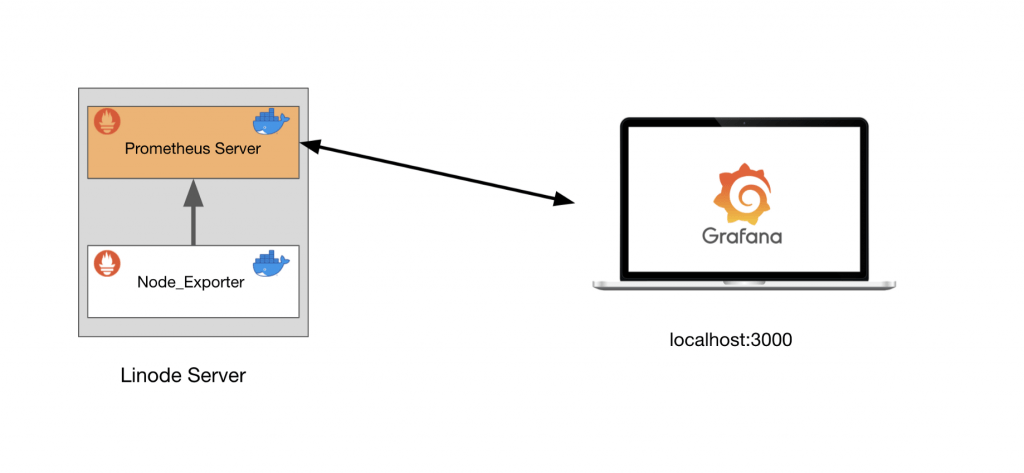
Information stockpiling design :-
Prometheus information is put away as measurements, with every measurement having a name that is utilized for referring to and questioning it. Every measurement can be penetrated somewhere around a discretionary number of key=value sets (marks). Marks can remember data for the information source (which server the information is coming from) and other application-explicit breakdown data, for example, the HTTP status code (for measurements connected with HTTP reactions), question strategy (GET versus POST), endpoint, and so on The capacity to indicate a self-assertive rundown of names and to inquiry in light of these progressively is the reason Prometheus’ information model is called multi-dimensional. Prometheus stores information locally on plate, which helps for quick information stockpiling and quick querying.There is capacity to store measurements in remote storage.
Information assortment :-
Prometheus gathers information as time series. The time series are worked through a draw model: the Prometheus server inquiries a rundown of information sources (here and there called exporters) at a particular surveying recurrence. Every one of the information sources serves the current upsides of the measurements for that information source at the endpoint questioned by Prometheus. The Prometheus server then, at that point, totals information across the information sources.Prometheus has various components to naturally find assets that it ought to use as information sources.
- Check
- Counter
- Histogram
- Rundown
PromQL :-
Prometheus gives its own question language PromQL (Prometheus Query Language) that allows clients to choose and total information. PromQL is explicitly acclimated to work in show with a Time-Series Database and accordingly gives time-related inquiry functionalities. Models incorporate the rate() work, the moment vector and the reach vector which can give many examples to each questioned time series.Prometheus has four plainly characterized measurement types around which the PromQL parts rotate.
The four sorts are:
Cautions and observing-
Setup for cautions can be indicated in Prometheus that determines a condition that should be kept up with for a particular length for an alarm to trigger. At the point when cautions trigger, they are sent to Alertmanager administration. Alertmanager can incorporate rationale to quietness cautions and furthermore to advance them to email, Slack, or notice administrations, for example, PagerDuty. Some other informing frameworks like Microsoft Teams could be arranged involving the Alertmanager Webhook Receiver as component for outer reconciliations. likewise Prometheus Alerts can be utilized to get cautions straightforwardly on android gadgets even without necessity of any objectives design in Alert Manager.
Dashboards-
Prometheus isn’t planned as a dashboarding arrangement. In spite of the fact that it tends to be utilized to diagram explicit inquiries, it’s anything but an undeniable dashboarding arrangement and should be snared with Grafana to create dashboards; this has been refered to as a weakness because of the extra arrangement complexity.
Interoperability-
Prometheus favors white-box observing. Applications are urged to distribute (trade) inner measurements to be gathered occasionally by Prometheus.Some exporters and specialists for different applications are accessible to give metrics.Prometheus upholds a few checking and organization conventions to permit interoperability for progressing: Graphite, StatsD, SNMP, JMX, and CollectD.
Scope of Prometheus:-
Prometheus centers around the accessibility of the stage and essential operations.The measurements are ordinarily put away for a considerable length of time. For long haul stockpiling, the measurements can be gushed to far off capacity arrangements. Prometheus is made out of different parts, every one of them giving a particular capacity, essential to Prometheus’ more extensive checking and alarming mission. These parts include:
The Prometheus Server:
This is the cerebrum of the framework. It gathers measurements as time series information from hubs and stores them. The most common way of gathering measurements is alluded to as scratching.
Prometheus measurements are put away in the time series design, which is fundamentally a grouping of information focuses taken at progressive similarly divided moments (for the most part in milliseconds).
Measurements can then be exceptionally distinguished and questioned utilizing the measurement name or a mix of the measurement name and discretionary key-esteem sets called names. Utilizing marks empowers you to separate or total specific qualities of a metric which you need estimated independently from the measurement overall. This thusly makes an entirely different time series distinguished by a mix of the measurement name and the mark.
For instance, say you need a method for following the quantity of http demands for different pages in your application, as indicated by their way. One method for doing this is to make different measurements, each relating to every way, for instance logout page, addUser page and remark page separately.
In any case, in a circumstance where you want to question for the absolute http demands from your application, this becomes awkward on the grounds that you would then need to know every one of the ways in your application, and inquiry for every one of their measurements. Nonetheless, with marks, you could set up a solitary measurement, say http_requests_total and add a “way” name to it, for instance. This would permit you to inquiry for the complete solicitations by just overlooking the “way” mark from the question, or inquiry for the solicitations to a specific page by essentially adding the way to that page in the arrangement portrayed previously.
The Prometheus server effectively pulls (scratches) measurements from applications it screens at spans (scratch stretch) instead of different apparatuses like Graphite which inactively trust that the applications will push their measurements. This model diminishes customers of the greater part of the responsibility, since the Prometheus server does all the truly difficult work. They should simply uncover their measurements such that the Prometheus server can get to. They do this by uncovering a HTTP endpoint, normally/measurements, which returns the full rundown of measurements (with going with name sets) and their qualities.
Customer Libraries and Exporters: Earlier, I referenced customers basically need to uncover their measurements for Prometheus to scratch, however this information must be in a configuration that Prometheus gets it. Prometheus stores information in a period series design, and just acknowledges information of that structure. Thus, the measurements uncovered by customers must be in this organization for Prometheus to scratch. Notwithstanding, time series arranged measurements don’t ordinarily come out from applications; for the most part, instrumentation that delivers these kinds of measurements would need to be physically added. This should be possible in two ways, contingent upon whether you control and can adjust the source code for the application whose measurements you need shipped off Prometheus.
For the situation where you control the source code, with not very many lines of code, you can characterize and add your ideal measurements involving Prometheus’ customer libraries in an interaction called direct instrumentation. Customer libraries handle every one of the fundamental subtleties, for example, accounting or string security, and conveys your measurements in a configuration that can be straightforwardly scratched by Prometheus, passing on the client with very little to . Most libraries likewise give specific measurements, for example, CPU use and trash assortment insights out of the case contingent upon the runtime climate and the library being utilized.
For the situation where you have zero influence over the source code, direct instrumentation isn’t a choice. Take for instance, you need some metric data about the Linux bit. Albeit the piece would probably have some component to yield metric data, it’s exceptionally impossible that this information would be in an organization that can be perceived and scratched by Prometheus. Yet, we can’t involve customer libraries for this situation to trade the measurements since we have no admittance to the source code for the linux portion. For this situation, we use exporters. Exporters are bits of programming that you can send close by applications whose measurements.
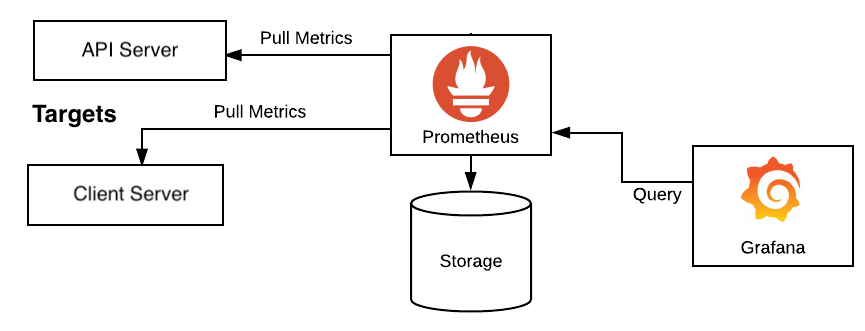
What is Prometheus – Use cases :-
Prometheus has acquired a standing as the accepted observing programming lately. Its usability, flexibility and in a real sense perpetual coordination choices make it a top pick in the observing and cautioning local area. It fits well with IoT, cloud observing and in a real sense some other checking use case you could imagine. Notwithstanding, one circumstance Prometheus where Prometheus doesn’t flourish is in a push based metric assortment use case. There are some workarounds, as you can find in our article Monitoring a Python Web App with Prometheus.
In spite of the fact that it has the Pushgateway to deal with pushed measurements, the Pushgateway isn’t fit for changing over Prometheus into a push-based checking framework. Its only design is to fill in as metric store for fleeting positions of some kind as clarified previously. Aside from this, I’d say Prometheus would deal with essentially anything you toss at it, and flourish while getting it done.
- Prometheus 1.0 was delivered in July 2016
- Prometheus 2.0 in November 2017
- The venture is written in Go and authorized under the Apache 2 License
- Source code accessible on GitHub
- A complex information model
- Functional effortlessness
- Versatile information assortment
- Strong inquiry language
What is Hosted Prometheus by MetricFire ?
Prometheus is a staggeringly strong application, yet it involves a decent lot of establishment and setup to get it ready for action. Additionally, considering that Prometheus is open source in nature, you would likely need to deal with support and updates physically – you’ll have to have a devoted group of architects to deal with this.
All the excess working expense totally disappears when you change to a facilitated variant of Prometheus, similar to the one presented by MetricFire. With no support to stress over, you can without much of a stretch use and scale Prometheus first thing. Also with the MetricFire group taking care of all refreshes in the background, you can be have confidence that you’ll forever have the latest form of Prometheus each time you sign in. Take our Hosted Prometheus presenting for a twist today, with a free preliminary or address us for a demo.
In May 2016, the Cloud Native Computing Foundation acknowledged Prometheus as its second hatched undertaking, after Kubernetes.
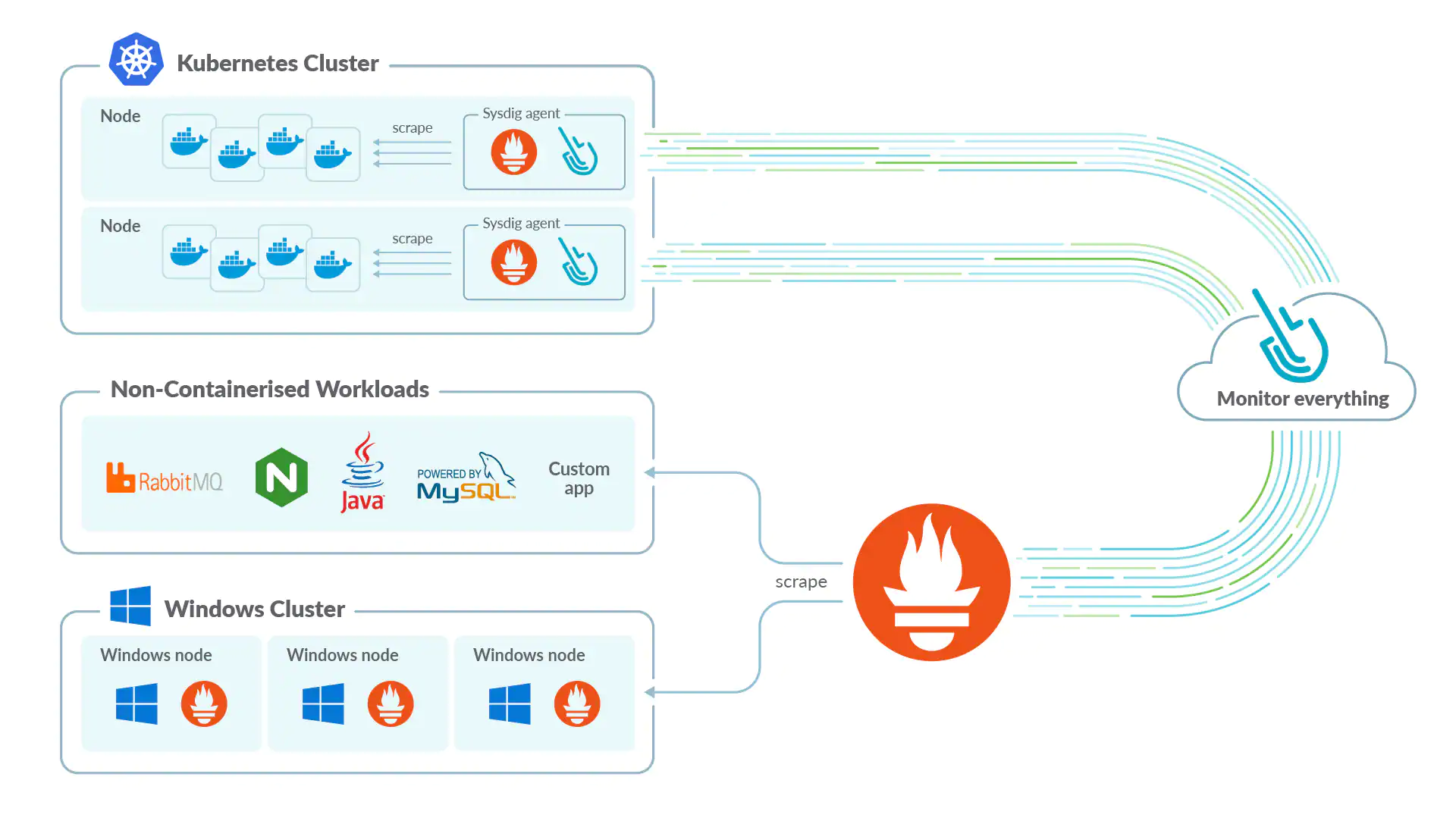
Applications of Prometheus :-
Push Gateway:
What in the event that you have fleeting or bunch occupations whose life expectancy is more limited than the scratch stretch? That is, your work begins running and finishes before Prometheus gets an opportunity to scratch measurements. How then, at that point, do you gather measurements for such positions? The Push Gateway, child! The Prometheus Push Gateway exists exclusively to permit fleeting tasks to open their measurements to Prometheus. Since these sorts of occupations may not exist long enough for Prometheus to scratch them, they can rather push their measurements to a Push Gateway, which goes about as sort of a measurement reserve, holding them sufficiently long enough so they can be scratched . See this MetricFire blog article on the best way to utilize a Push Gateway.
Alertmanager:
Although Prometheus is most popular for its metric assortment, all that information would be futile on the off chance that it doesn’t instant activity. The Prometheus Alertmanager permits you to characterize your own cautions on the gathered measurements, with the goal that you can be informed in the event of any anomalies or inconsistencies in the information gathered. The Alertmanager can be designed to bunch specific cautions of a similar kind, stifle specific alarms in view of different alarms. For instance, an alarm is terminating showing that a bunch is down – in light of this, Alertmanager can be arranged to smother any remaining cautions coming from that group, and numerous other progressed use cases. Utilizing different accessible mixes, the ready supervisor can be utilized to send cautions straightforwardly through SMS, email, Slack, PagerDuty, and so forth.
Perception:
The measurements gathered by Prometheus are put away locally in a period series information base. With the assistance of the Prometheus Query Language (PromQL), a client can choose and total existing time series information continuously. The consequence of this can either be displayed as diagrams or plain information in the Prometheus Expression Browser or be utilized to take care of an outer perception incorporation through the utilization of a HTTP API. The outer mix of decision for Prometheus representation would be Grafana.
Notwithstanding, as Prometheus stays an open source project, you would physically need to set up every one of these parts, and keep up with them to guarantee they offer the benefit portrayed previously. To evaluate a cloud facilitated adaptation of Prometheus connect with the MetricFire group today for a demo, or give it a shot for yourself on a free preliminary.
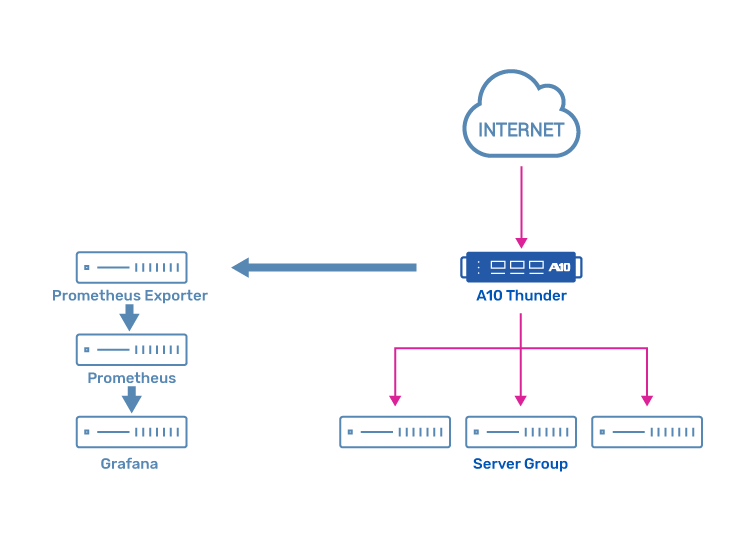
- A multi-layered information model with time series information recognized by metric name and key/esteem sets
- No dependence on disseminated capacity; single server hubs are independent
- Time series assortment happens through a draw model over HTTP
- Pushing time series is upheld through a mediator passage
- Targets are found through assistance revelation or static setup
- Numerous methods of diagramming
Elements of Prometheus :-
Prometheus’ primary elements are:
A commonplace checking stage with Prometheus is made out of numerous devices:
Prometheus server: the primary Prometheus server which scratches and stores time series information.
Customer libraries: customer libraries for instrumenting application code.
Push passage: a push door for supporting brief positions.
Exporters: unique reason exporters for administrations like HAProxy, StatsD, Graphite, and so forth.
Alertmanager: an alertmanager to deal with alarms.
- Before you can screen your application administrations, you really want to add instrumentation to their code through one of the Prometheus customer libraries.
- Customer libraries allows you to characterize and uncover interior measurements through a HTTP endpoint on your application’s case.
- Since these sorts of occupations may not exist to the point of being scratched, they can rather push their measurements to a Pushgateway. The Pushgateway then, at that point, opens these measurements to Prometheus.
- Design for alarms can be determined in Prometheus that indicates a condition that should be kept up with for a particular span for a caution to trigger.
- The time series are worked through a force model.
- The Prometheus server queries(scrape) a rundown of information sources (now and then called exporters) at a particular surveying recurrence.
Prometheus Client libraries :-
Conclusion :-
Prometheus information is put away as measurements, with every measurement having a name that is utilized for referring to and questioning it Prometheus stores information locally on plate, which helps for quick information stockpiling and quick questioning yet capacity to store measurements in far off capacity.




